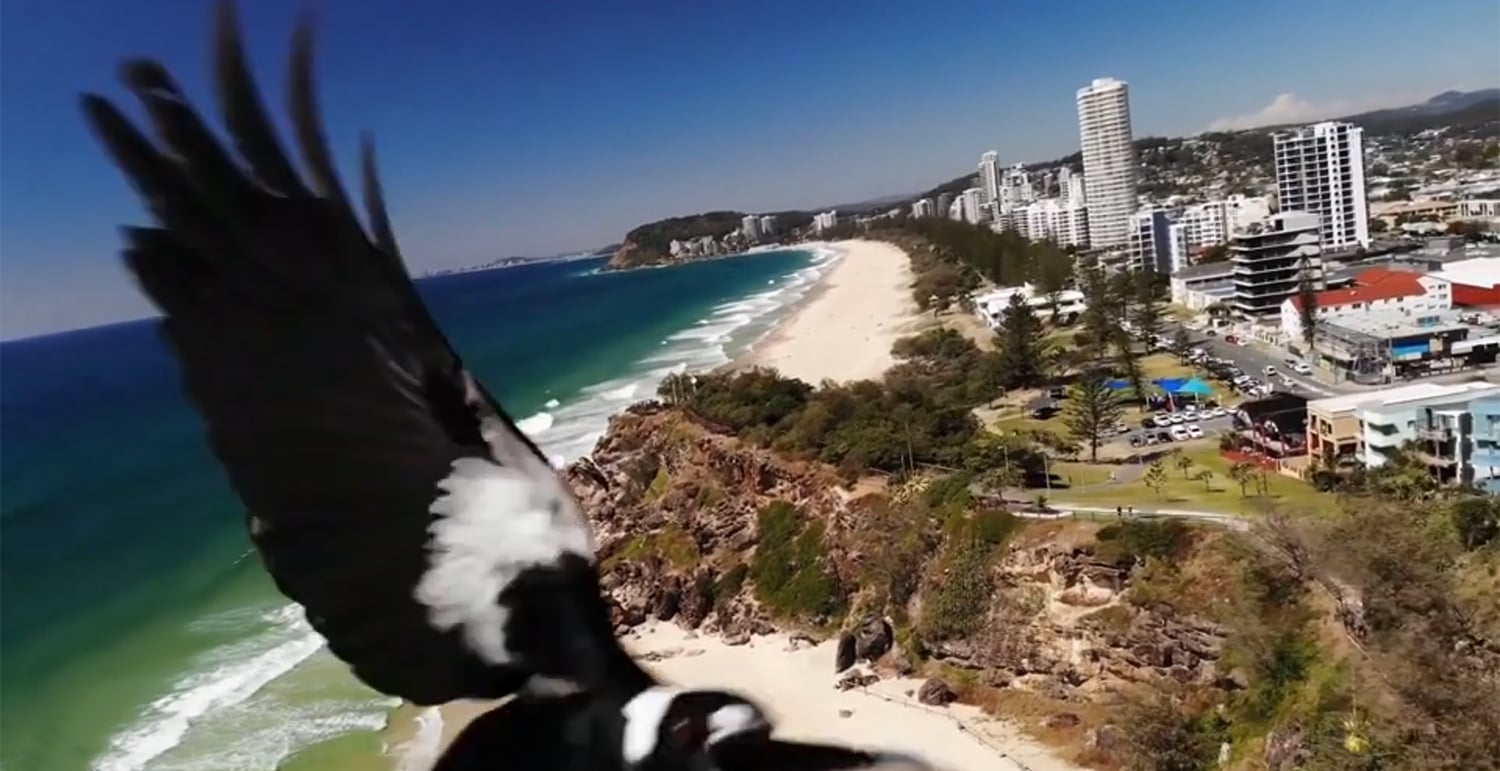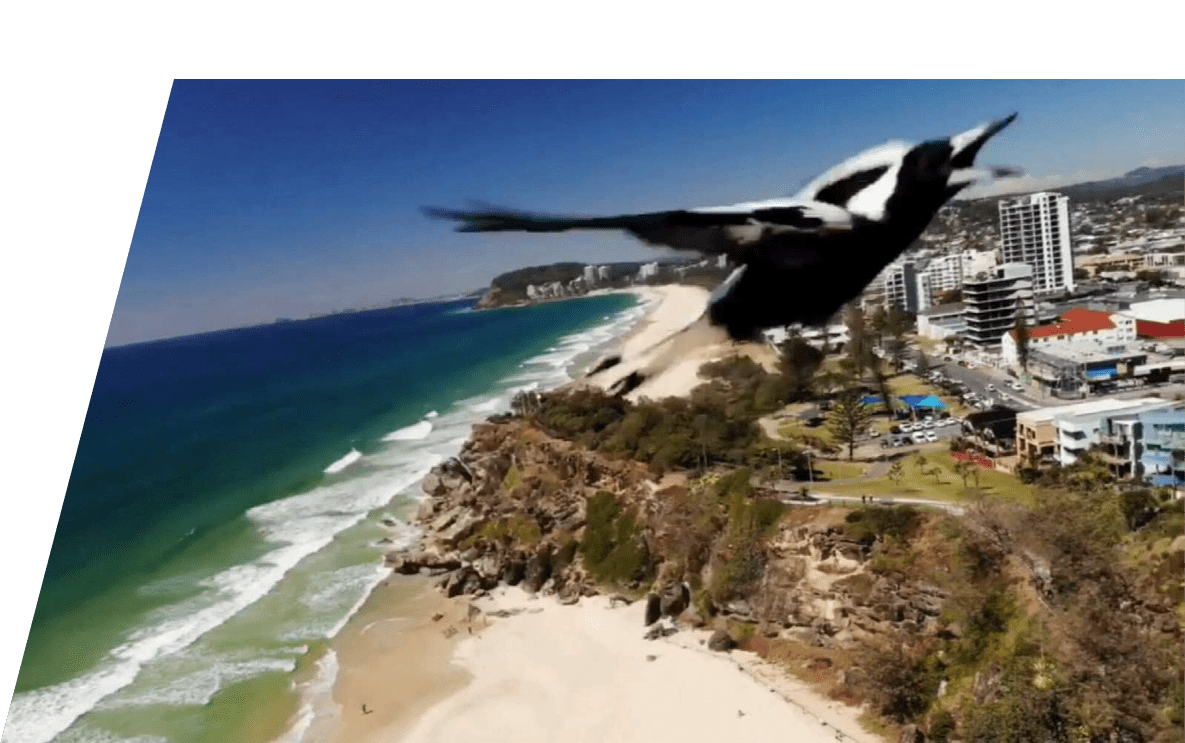[startwrap class=”row”]
[divup class=”col-lg-7″]
Us Aussies are tough, we can handle the 8ft brown snakes and bird eating spiders, but one animal garners more fear than all of the rest, particularly during mating season. The humble magpie. Spring is a time of new beginnings and new seasons for the magpie but these overly aggressive sentries of the sky can make it tricky for the drone pilot to safely and successfully complete their mission.
Its normal for a commercial pilot to run through a checklist before launching, “plan to fail” as we say. We consider things like uncalibrated sensors, a poorly charged remote controllers, and weather but rarely do we consider a potential bird strike as a threat until it is too late.
Below we have put some thoughts on how to fly safely during spring, to make sure you come home unscathed, but also giving you the biggest chance of completing your mission.
- Where possible, avoid nesting locations. Websites like https://www.magpiealert.com will provide you with a map of possible nests and recorded attacks of the season. It’s best to leave these locations alone during mating season.
- Fly early in morning. Hunting birds usually rely on thermals to fly so they can conserve energy ready for the strike, and therefore are more likely to be active later in the day. Schedule your flight when the air is still cold!
- Where possible, stay away from areas that have an abundance of prey. An adult Magpie is constantly on the hunt for food for its babies, farms and rural areas with tall surrounding trees should always put a drone pilot in command on high alert.
- Make your drone brighter. If you get caught in a bird attack, you’ll be pulling some evasive manoeuvres and you’ll need to be able to see the aircraft as clearly as possible.
- Learn how to conduct an efficient and deliberate scan of your sky so you can see the trouble coming and react as fast as possible! No more than 10 degree eye movements with one second pauses works for us.
Unfortunately, there is going to be times where you do all these things and you will still find yourself in a war with a bird. If that happens there is two things you can do to get your drone back. - Climb. When birds attack, they usually do it from above. With this in mind, bringing the aircraft straight down risks putting the aircraft straight in the strike zone of an aggressive bird, and also risks you descending into your own dirty air and possibly entering vortex ring state – either way, your aircraft is coming down fast!.

Whilst this move may seem counterintuitive to you, it is an unnatural reaction for the bird and will buy you some time to fly away. It maybe the unexpected nature of vertical ascensions that makes these birds realize that this machine they are hunting is not a bird – and therefore, nothing of interest to them.
Bug out. You’ll want to get that aircraft out of the same sky as an aggressive bird. At the end of the day, it’s their sky and we are the visitor. Fingers crossed if you act fast enough, you’ll be able to save your aircraft and not injure the bird!
So as you head out this spring, it wouldn’t hurt to add an extra line on your pre-launch checklist – Risk of bird strike? And check in with yourself about how prepared you are to handle this risk.
Happy flying!
The UAV Training Australia Team
[divup class=”col-lg-4 offset-lg-1 blog-images”]

[endwrap]
